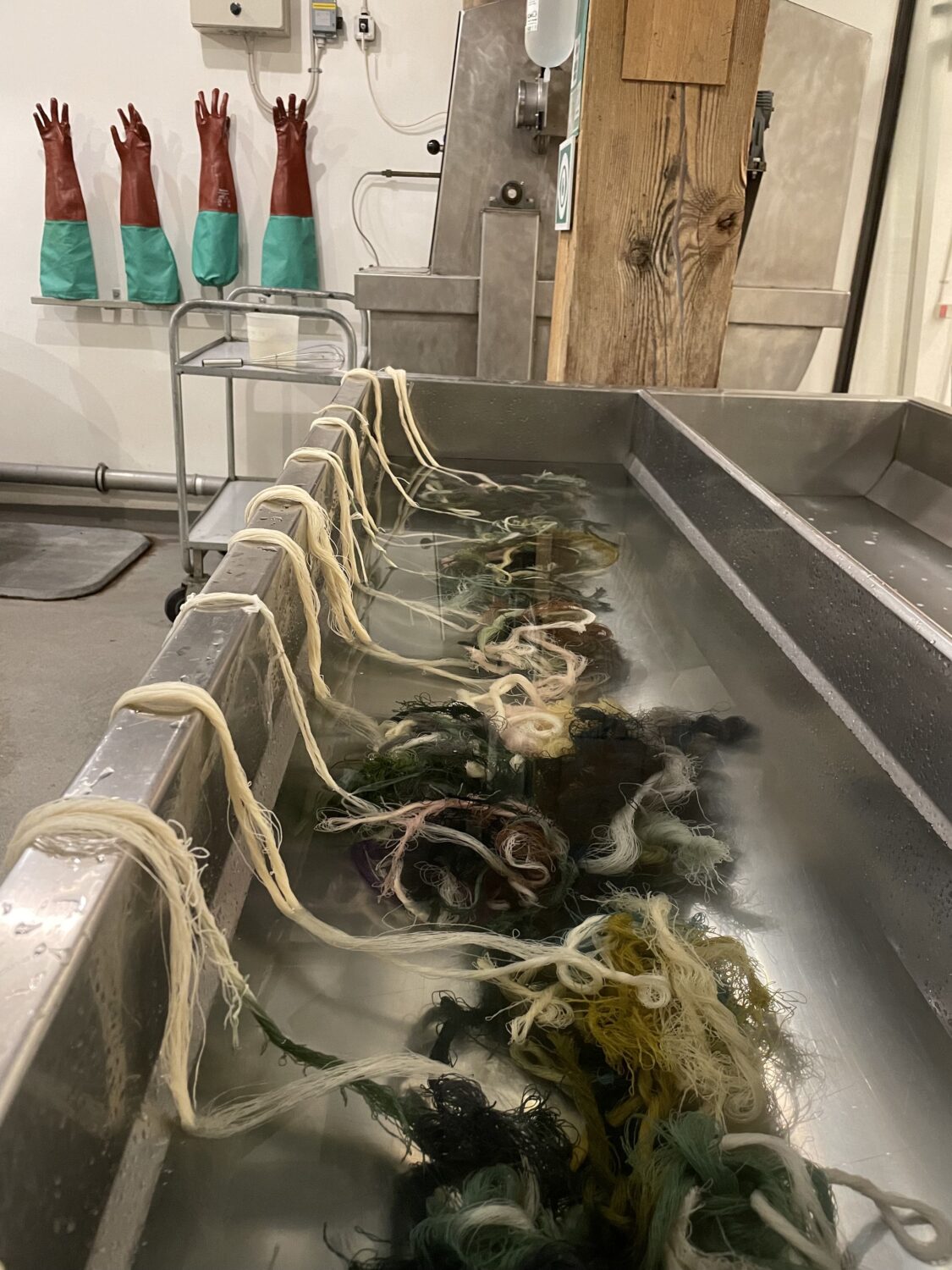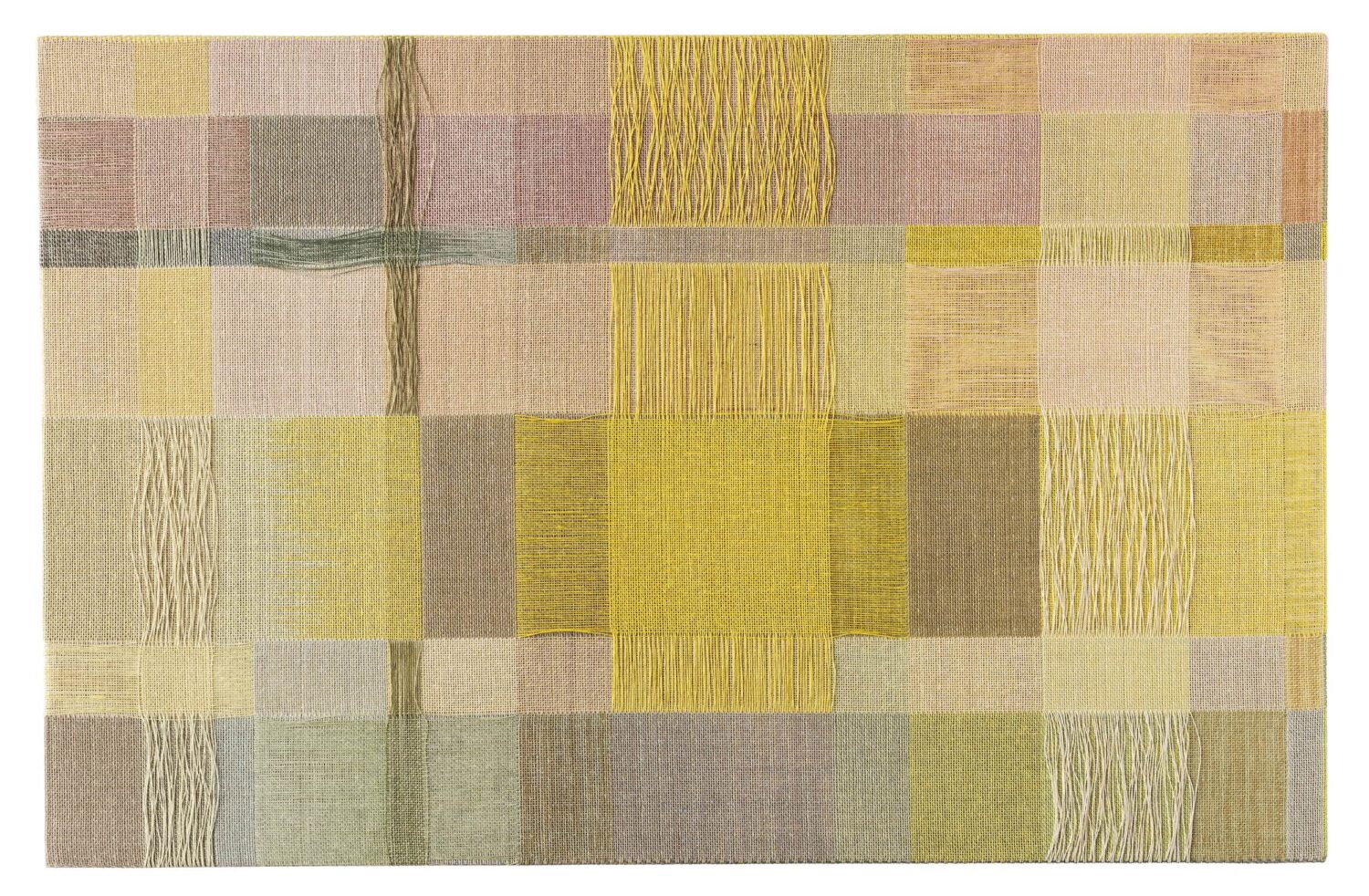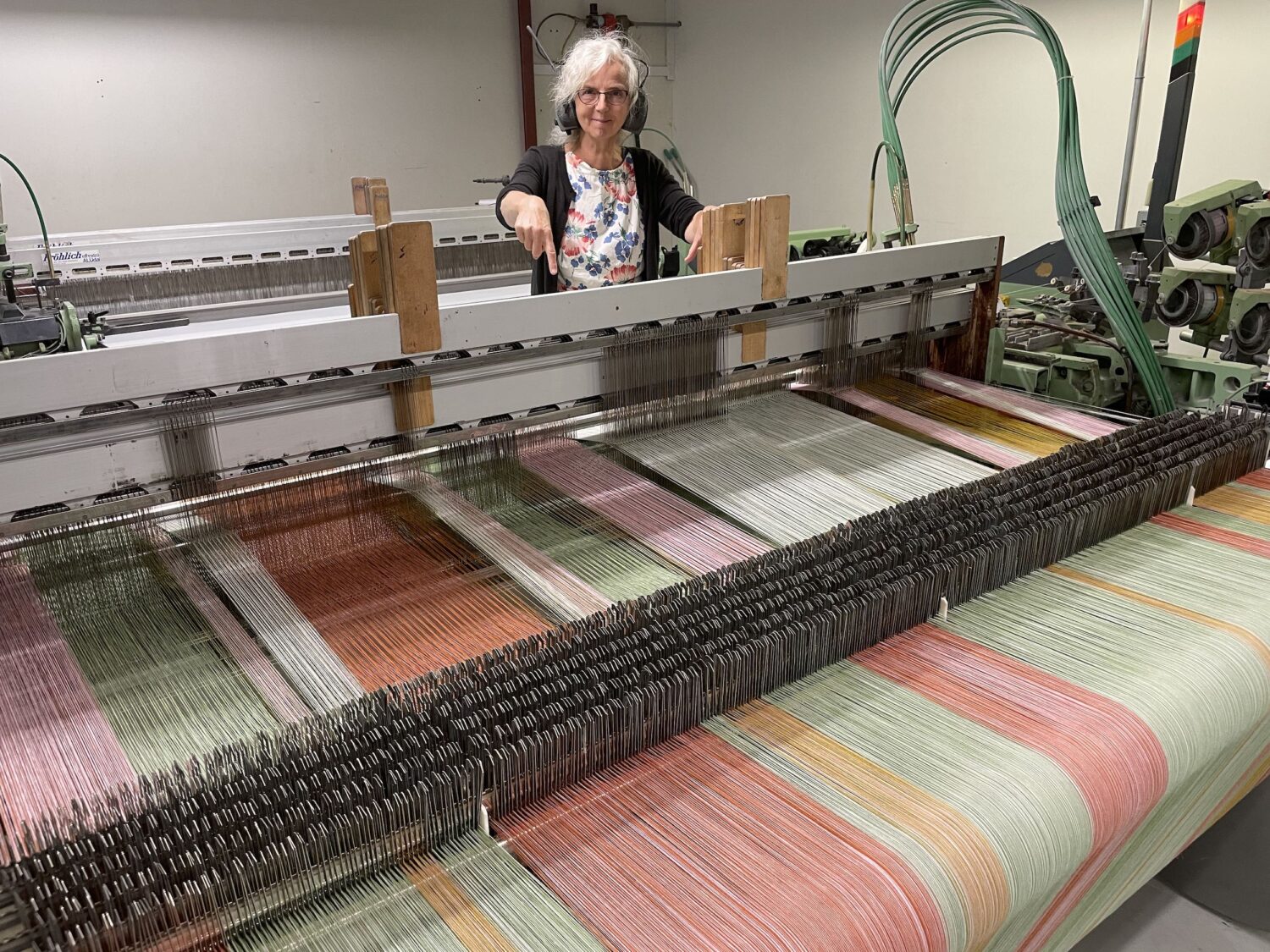Anne Mette Larsen welcomes me into her home, which she shares with ceramist Sverre Tveito Holmen. The exhibition catalogue for ‘WINTERVALS OG SOMMERPOLKA – and Rosa out of rhythm’ is ready on the table. This exhibition is our topic of discussion. But it quickly becomes evident that Anne Mette is busy with multiple exciting projects that we also need to touch upon.
Wintervals and Summer Polka
The Wintervals began with Anne Mette Larsen’s love for folk music: “it’s a significant part of me and wintervals is a beautiful word,” Anne Mette Larsen explains.
“When I went to Copenhagen a year ago to start the project, I had all my kilos of undyed paper yarn and this title in mind. I was also deeply affected by the war in Ukraine, which I was following, and it hurt. It was a waiting position,” Anne Mette Larsen continues her story.
“I have a love for Ukraine. For many years, I’ve had an eastward yearning and have been drawn to the countries east of the old wall. It was by chance that Ukraine was on the way to Moscow, where I wanted to go. But then Ukraine became significant, and I have visited several times since. It’s not that I translate my impressions from the world 1:1 – but I had a color universe in my head that was the starting point. The exhibition title almost came as a gift last summer when I learned a Ukrainian waltz and a polka from Olena Yeremenko from Ukraine,” Anne Mette Larsen shares about her inspiration.
In 2011, Anne Mette Larsen received the Biennale Prize for the work More Asphalt to Ukraine.
On Colors, Process, and the Creative Space
Anne Mette Larsen is known for her strict geometric checks, but in Vintervals, she has explored new directions. Here, the chaos of the process, the imprecision, and the random are allowed to become part of the artwork. Precisely because of many years of experience with dyeing and weaving, she can accommodate the coincidences that arise in a deliberately uncontrolled color mix. The works are woven on the same chain, dyed in batches, so the colors shift during weaving. There can be up to 100 dye baths in one setup.
“My technique is multiple layers of plain weave, as I usually do, distributed over as many sections as I have shafts for, as usual. I can’t control the color, so sometimes little miracles happen, and sometimes it goes a bit awry.
In my previous works, I often had a constructed template, but here I have worked more intuitively. It’s much more time-consuming, but it provides a larger creative space in the process. In the past, I’ve hidden color transitions on the back of the work, but now I’ve started using color changes on the front. It helps to dissolve the image a bit,” explains Anne Mette Larsen.


The Color Pink Sneaks into the Works
Pink is highlighted in the title of Anne Mette Larsen’s exhibition, and she indeed has a special relationship with the color.
“I simply can’t help but use it. In small amounts, it does something incredibly good to many colors. Several times I decided that I should stay away from it, but it sneaks in anyway. Then it got completely out of hand in the pink project. It hurts a bit. It’s a bit rebellious,” Anne Mette Larsen shares.
Almost as Fine as Visual Art
She created the works during a residency at the National Workshops for Arts in Copenhagen. When I ask about the significance of this experience, the answer comes immediately:
“I’ve gained a vast network by working at the National Workshops for Arts. That’s where I meet colleagues. Including visual artists. In recent years, I’ve noticed a change in how textiles, and what I do, are perceived. Partly because of the interest and respect for the craft. Also, for the expression that comes through the weavings. It’s almost as esteemed as visual art… At least, it’s now hung up on a nail in a gallery.”

When the works are placed in the context that the art world provides, something new also happens, Anne Mette Larsen explains:
“Of course, what happens is that a different audience comes in. They view my works with a different perspective. It’s interesting to be in that context. In December, I’ll be joining Steen Ipsen and Asmund Havsteen-Mikkelsen with the gallery (Kant, ed.) for Art Antwerp. And in February, my works will, for the third time, be presented with Kant at Art Rotterdam. I find that exciting. To be contextualized with those who work in an entirely different manner and come from a different place.”
Art galleries are more attentive to crafts than before, Anne Mette Larsen notes:
“I can see that it’s becoming more embraced in various places. The boundaries are dissolving. I also find myself in a gray area, and it feels good.”

The Weaver as a Material Researcher
Another significant aspect of Anne Mette Larsen’s work is her involvement with the Mid-Jutland Rugs, which are produced in Norway. Initially, she approached Kjellerup Weavery in Mid-Jutland, but they outright rejected her. When the weavery changed hands, Anne Mette Larsen attended a fair in Herning where the new owners were delivering the opening speech. It turned out to be a wise decision.
Three years after meeting the new owners, Anne Mette Larsen is about to launch a new series of rugs produced in Kjellerup. This collaboration is a prime example of a production company benefiting from the unique material and color expertise of a craftsperson.
“I wanted to develop a quality based on the patterns I use in my unique works, using their yarn and tailored to their machinery. I have been working on this at home on my small loom for about a year,” explains Anne Mette Larsen.
On two occasions, each lasting several months, she worked at the weavery, testing weaves in various color schemes and designs.
“For me, as a weaver, it’s been fantastic to get hands-on with all their machinery. And it’s very satisfying to see the nearly finished rugs coming off the loom after years of preparatory work and many long days at the weavery. Kjellerup Weavery is also the last of its kind in Denmark, so it’s something to be cherished. The whole industry is under pressure,” Anne Mette Larsen concludes.

On February 1st, Anne Mette Larsen will open an exhibition in Officinet, where the entire process from Kjellerup Weavery will be showcased under the title “a slumber rug from Kjellerup.”
Bio
Anne Mette Larsen
Born 1961, Aarhus, DK
Education: Aarhus Art Academy, weaving/painting, 1995-99
She has participated in numerous juried exhibitions in Denmark and abroad. This includes the Craft & Design Biennale 2011 at Koldinghus, where she received the Biennale Prize.
Anne Mette Larsen will also exhibit at the Johannes Larsen Museum in March 2024.
She is currently exhibiting at Galleri Kant in Copenhagen until October 28th, 2023. The exhibition catalog for ‘Wintervals and Summer Polka – and Rosa out of rhythm’ can be purchased at the gallery or directly from Anne Mette Larsen for 50 kroner – or downloaded for free in a digital version here.
More Knowledge in the Archive
Formkraft boasts a vast digitalized archive of journals on Danish crafts and design. You can find individual journals at Journal Shelf or search for relevant keywords in the archive. For instance:
Textile


